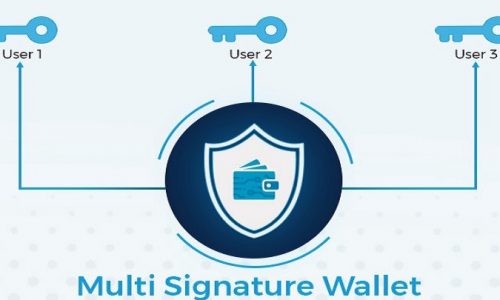You should know that it is very possible to begin using Bitcoin without an understanding of the technical details. All that you really need to do is create a crypto wallet using one of the various methods. The wallet will then generate a set of addresses for you that is used to make Bitcoin transactions. Receiving Bitcoin from someone is as simple as sharing your receive address. In this way, making a Bitcoin transaction is just as easy as using your email program.
There are some people who want to know more about the technology behind the platform. Cryptoswede has prepared a basic guide to Bitcoin transactions for beginners. It should answer most of the questions about how Bitcoin moves from one individual to another.
Tracking Balances – The Blockchain
Any medium of exchange requires a system of tracking and maintaining balances. At your bank there is a sophisticated computer operation that registers when you receive money from someone and when you send money to someone else. This type of tracking is generally referred to as a ledger.
Bitcoin also uses a ledger to track balances and transactions. This ledger is called the blockchain. It is a shared public ledger, and its existence is what underpins the entire Bitcoin network. Without the blockchain there is no Bitcoin. Whenever a peer-to-peer transaction is made a record of the transaction is preserved on the blockchain.
Bitcoin wallets work in partnership with the blockchain so that a person’s Bitcoin balance can be calculated and verified. Transactions are also verified by a group of peers on the network. This helps to insure that the Bitcoins being transferred actually come from the wallet of the user and not someone’s else.
Cryptography is what makes the blockchain secure and effective. There is a chronological order of transactions preserved on the blockchain for all time, encrypted so that the data is protected. Each new transaction relies upon the accuracy of previous transactions to be confirmed. This makes it almost impossible for the record of transactions to be altered in some fashion.
Bitcoin Addresses and Private Keys
What are Bitcoin transactions? Well, think about what constitutes a transaction with standard currency. Let’s say that you go to the local grocery store to replace your food supplies. You select the items you want and go to the register to pay. The cashier totals your items and tells you how much money is required. You then open up your wallet to retrieve a debit card or cash, or maybe you write a check. The cashier hands you a receipt. You have just completed a financial transaction.
Bitcoin is very much the same. You find something that you want to buy. The seller accepts Bitcoin as a form of payment. You use your Bitcoin wallet – the mechanism that stores your Bitcoin – to make a payment for the goods. The Bitcoin is taken from your wallet and sent to the wallet of the seller. This completes the first part of a Bitcoin transaction.
When individuals transfer Bitcoin among themselves, a record of that transfer gets added to the blockchain. The sender of the Bitcoin digitally signs the transaction with their sending address, or private key. This encrypted key is what identifies the correct wallet. It is very important that individuals always secure their private keys. The private key also works to make sure that the transaction that has been made cannot be altered. In other words, no one can change the amount of the Bitcoin that has been sent from one wallet to another.
The second part of a Bitcoin transaction is a process of verification. It is the method by which the entire community of participants in the blockchain network are able to confirm that the transaction has taken place. This second part of the transaction process is most often referred to as mining.
The Verification of Bitcoin Transactions
We used the example of a bank earlier when we were speaking of making Bitcoin transactions. This is important. At a bank there is also a need to periodically verify the ledgers of account balances to make sure that no mistakes have been made. This is called an audit. You also do something similar when you reconcile your bank account and checkbook. You are looking for any errors that may have been made, and you want to balance in your account to match what it officially recorded on the ledger.

Now, ask yourself how often you balance your checkbook? Do you do it once a week? Once a month? The Bitcoin ledger is balanced, on average, every twenty minutes. That’s about how long it takes for a Bitcoin transaction to be broadcast to the network so that other can help confirm it.
Mining is this process of confirmation of Bitcoin transactions. It is what preserves the integrity of the whole Bitcoin system. As a reward, those who participate in this mining process receive Bitcoin as a reward or “transaction fee.” The mining process is something that we have covered extensively here on Cryptoswede. It is complex and can also be very costly to those that wish to participate in it.
Now you have a somewhat basic view of what Bitcoin transactions are. This should be a good starting point if you want to learn more about the technology that is behind Bitcoin.
Related articles:
- How does a Bitcoin Node Verify a Transaction?
- What Is A Bitcoin Address, Private Key, Public Key, And Passphrase?
*** Here at CryptoSwede you will find information on Crypto Mining the different cryptocurrencies as well as the best cryptocurrency exchanges. You can trade or you can set up trading bots instead and then store the crypto on crypto wallets. Later, spend them using crypto debit cards!***




